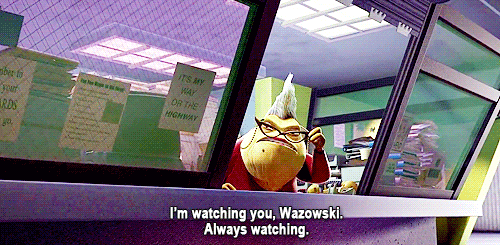13-02-06: Why CrossFit Kids?
In February of 2013, Elm City CrossFit joined the ranks of CrossFit gyms providing Kids courses to children of all ages. Given the reputation CrossFit has for extreme intensity and, occasionally, poor decision-making skills (google "Drywall CrossFit" or "overhead squat baby" and have a great read...), is it really smart to try to introduce children to this? Alternatively, is a CrossFit box really the best place to run a day-care? The answer to both questions is actually a resounding "no."
The goal is NOT to try to make children into mouth-frothing psychopaths, nor to baby-sit them. Like a lot of people, I came to CrossFit as a broken-down adult. (See an entire blog post basically called "Everything I've Ever Done Wrong"). One of the main goals of a CrossFit Kids course has to be helping children (and the adults they will grow into) to avoid going down this path. What if, rather than hitting their 30s, and wondering what they did wrong, they hit their thirties and just kept improving? What if, to play the sport of their dreams, or to do any activity they wanted, no extra work was needed, because it had already been done?

With the PreSchool age group ("Elements"), we have the chance to slowly and safely start introducing not just the basic skill set, but also the idea that "fitness" can be fun. Instead of going to the gym to "workout," they're going to that place where they get to run around, play dodgeball, and oh yeah, spend a few minutes each session learning how to perform the various squats, deadlifts, push-ups, etc. We have YEARS of encouraging sound mechanics and discipline before we ever consider loading them up with weights, and years of encouraging consistency of movement before we ever consider upping the intensity to anything that looks like "stereo-typical CrossFit." And the best part? At this age, we'll still actually see huge gains in strength, not because of increased resistance or anything like that, but because their brains are building the neural pathways, and reinforcing them, and recruiting muscle groups with increased efficiency... and all while they're just having fun.
In the Elementary school age group ("Foundations"), we can start adding in either unweighted or very low-weighted implements. Those overhead squats where the kids used to pretend to push up the sky? Yup, they've graduated to pvc pipes or 1# dumbbells. As they master the ability so show perfect form while being coached, we begin to emphasize their ability to replicate that movement every time. Remember those strength gains from when they were in the Elements/PreSchool class? Same thing applies, and we will still see huge gains from low-weight resistance. The games get more complex and competitive, and if anything, we'll see ourselves having to start reining the kids in. (Side-note: In one of our first days, we did team shuttle runs, boys vs. girls. We started seeing them fatiguing as they neared the finish line... then instantly perk back up and return to the line to wait their next turn. When adults would have been pulverized, they just kept going, and we ended up cutting it short, with them asking if they could do more running. Read that again, and compare it to the last time you did sprint work in an adult class. Not very likely.)
In the Teens classes, it finally becomes time to start adding weight and resistance. If the athlete started with us in the Elements/Preschool class, they'll have been doing these movements and slowly refining them for somewhere between 2-*10* years. Squats? Like clockwork. Really efficient, safe clockwork. And the weights will definitely be the carrot we use to continue to get perfect form out of them. You want an Olympic bar? Your squat better bring tears to my eye about how good a coach I am (or how gifted an athlete you are in spite of me!) if you want me to let you start adding weight. It's also the stick: Improper form under weight will result in a warning to improve on the next rep, with the result being a stripping of weight if form doesn't improve. Why?
At this age (and even in the younger age groups), the child's body is going through massive changes, some good, some downright confusing. Say you've got a 14 year old boy, been in the box for 8 years. He knows his movements in and out. Squats like a champ, deadlifts like a budding power-lifter. Suddenly, over week or so, he has a growth spurt, and now his legs are an inch longer than they were (I might be overstating the difference, but since it feels like you grew a foot, I'll allow it), while his arms haven't changed the same amount. Every angle in the deadlift and squat has changed. What felt like simplicity itself a week ago is suddenly a mystery. For both safety's sake, and for the athlete's, the only proper call is to back off on the weight, re-grease the grooves, relearn the movements in the new and improved body, and continue working from there. There is NO expectation of steady, perfect strength gains, just an understanding that a changing body is like adding in random accessory work, requiring time to learn and perfect form... again and again.
Eventually, when enough maturity and skill has been demonstrated, the teen may be invited to join the Teens Weightlifting Class, and start moving some serious iron. However, this is not to be mistaken for a "male body-part" measuring contest. As with all things CrossFit, the real competition isn't fostered between athletes, but between the athlete today and what she was doing yesterday, and what she wants to accomplish tomorrow. Gains will always be incremental, in the smallest jumps possible. How much more awesome to have a teen who PRs *every time* shee walks into the gym, than one who (like me, more than once) added 35# to a lift, only to find herself getting crushed every time she needs to move a percentage of that weight for reps. By this point, it's assumed these athletes will be finding sports to participate in, if not the Sport of CrossFit, and our job will be to complement what their coaches and trainers ask of them. Even in a "they're wrong, we're right" scenario, we're not making the final choice on who gets cut and who starts: Our job is just to help, and to stay out of the way, provided there are no safety issues with what the school/local team is asking of the athlete.
The pyramid above actually illustrates a concept that interests me greatly as a coach: The idea that, in order to have an impressive pyramid, you have to have an equally impressive foundation. The human body is much more like a pyramid than a sky-scraper (though top-level athletes successfully hide that fact). In order to perform at a pinnacle of success, a massive base of experience, strength, heart, and determination has to support it. CrossFit Kids is not about the pinnacle, but about laying the foundation. What the athlete does with it down the road? Only time will tell.
So "Why CrossFit Kids?" Instead, the question is actually "Why NOT CrossFit Kids?!"







